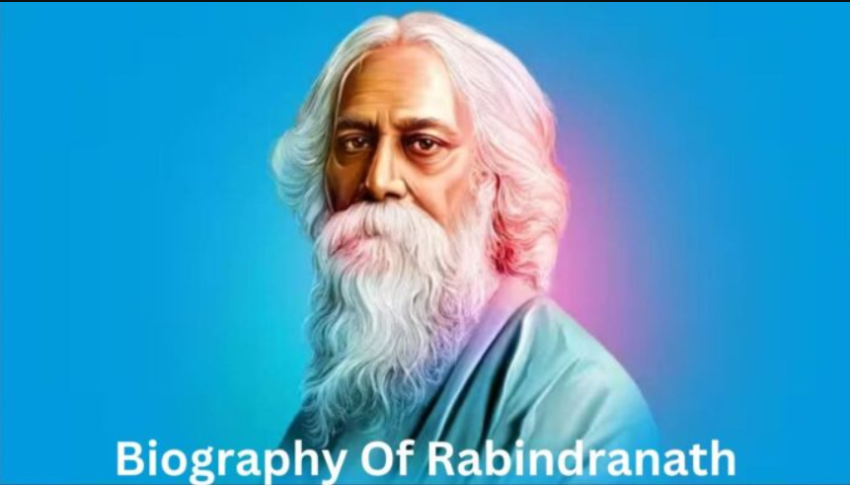Rabindranath Tagore was a prominent figure in the Indian cultural revival. As a polymath, he excelled in various fields including poetry, philosophy, music, literature, and education.
In 1913, Rabindranath Tagore made history as the first Asian to be awarded the Nobel Prize for his remarkable collection of poems titled Gitanjali.
He was affectionately referred to as Gurudev, Kabiguru, and Biswakabi, while his songs are widely recognized as Rabindrasangeet.
The national anthems of India and Bangladesh, “Jana Gana Mana” and “Amar Shonar Bangla” respectively, are derived from Rabindrasangeet.
Early Life of Rabindranath Tagore
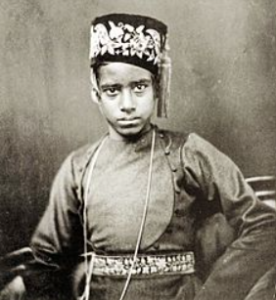
Rabindranath Tagore was born on May 7, 1861, in Calcutta, as the youngest son of Debendranath Tagore and Sarada Devi.
His grandfather, Dwarkanath Tagore, was a wealthy landlord and social reformer. His father, Debendranath Tagore, was a prominent figure in the Brahmo Samaj, a religious movement in nineteenth-century Bengal that sought to revive the fundamental monistic principles of Hinduism found in the Upanishads.
The Tagore family was a reservoir of talent across various domains. They facilitated the publication of literary magazines and regularly organized theatrical performances and recitals of both Bengali and Western classical music. Tagore’s father went a step further by welcoming numerous professional musicians to reside in their household, providing opportunities for the children to learn Indian classical music from them.
Tagore’s family boasted a rich array of talents across various fields. His eldest brother, Dwijendranath, was renowned as both a philosopher and poet. Satyendranath, another brother, notably became the first Indian to join the formerly all-European Indian Civil Service. Jyotitindranath, yet another sibling, excelled as a musician, composer, and playwright. Even Tagore’s sister, Swarnakumari, carved her niche as a novelist.
Rabindranath Tagore: Education
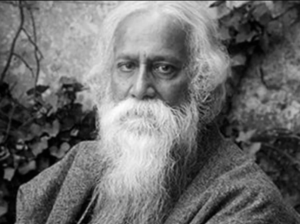
Rabindranath Tagore received his early education at Oriental Seminary School, although he soon grew disillusioned with conventional schooling. Opting for homeschooling, he was primarily tutored by his siblings, who imparted both literary knowledge and engaged him in physical pursuits such as gymnastics and martial arts.
Tagore exhibited exceptional talent in writing from a young age, beginning to compose and publish poetry as early as eight years old.
At the age of eleven in 1873, Tagore embarked on a journey across India with his father, visiting various destinations including his father’s Santiniketan estate and Amritsar. Their travels extended to the Himalayan hill station of Dalhousie, where Tagore delved into diverse subjects such as biographies, history, astronomy, modern science, Sanskrit literature, and the classical poetry of Kalidasa.
At seventeen, Tagore was sent to England for formal law schooling, but he didn’t complete his studies there. Instead, he pursued independent studies focusing on Shakespeare.
Upon returning from England in 1880, he began regularly publishing poems, stories, and novels in Bengali, gradually revolutionizing Bengali literature.
In 1883, he entered into marriage with Mrinalini Devi, following the tradition of child brides prevalent during that era.
Works of Rabindranath Tagore
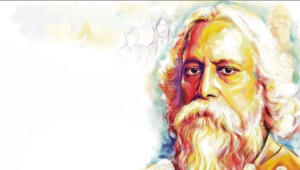
While Tagore excelled in various literary forms, his primary forte lay in poetry. Among his extensive repertoire of literary works, his poetry stands out prominently.
His poetic collections include “Manasi” (1890) meaning “The Ideal One,” “Sonar Tari” (1894) which translates to “The Golden Boat,” “Gitanjali” (1910) or “Song Offerings,” “Gitimalya” (1914) symbolizing “Wreath of Songs,” and “Balaka” (1916) known as “The Flight of Cranes.”
Translations of his poetry into English, such as “The Gardener” (1913), “Fruit-Gathering” (1916), and “The Fugitive” (1921), don’t necessarily align with specific volumes in the original Bengali.
Tagore’s significant plays include “Raja” (1910) [The King of the Dark Chamber], “Dakghar” (1912) [The Post Office], “Achalayatan” (1912) [The Immovable], “Muktadhara” (1922) [The Waterfall], and “Raktakaravi” (1926) [Red Oleanders].
He authored numerous volumes of short stories and several novels, including “Gora” (1910), “Ghare-Baire” (1916) [The Home and the World], and “Yogayog” (1929) [Crosscurrents].
In addition to his literary works, Tagore ventured into musical dramas, dance dramas, essays, travel diaries, and penned two autobiographies – one during his middle years and the other shortly before his demise in 1941. He also left behind a legacy of drawings, paintings, and songs, for which he composed the music himself.
He additionally portrayed the title character in his inaugural original dramatic composition, “Valmiki Pratibha.”
Rabindranath Tagore in Independence movement
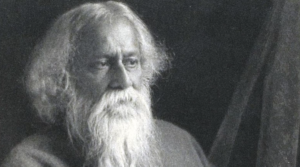
Tagore engaged sporadically in the Indian nationalist movement, albeit in his distinctive non-sentimental and visionary manner; and Gandhi, the political patriarch of modern India, remained his steadfast ally. Tagore eventually earned recognition as one of the architects of modern India.
In his work “Discovery of India,” India’s inaugural Prime Minister, Jawaharlal Nehru, reflected, “Tagore and Gandhi have undoubtedly been the two outstanding and dominating figures in the first half of the twentieth century. Tagore’s influence over the mind of India, and especially of successive rising generations has been tremendous. Not Bengali only, the language in which he wrote, but all the modern languages of India have been molded partly by his writings. More than any other Indian, he has helped to bring into harmony the ideals of the East and the West, and broadened the bases of Indian nationalism.”
In 1905, Viceroy Curzon’s decision to partition Bengal into two parts met strong opposition from Rabindranath Tagore. Tagore expressed his dissent through numerous national songs and actively participated in protest gatherings. Notably, he pioneered the Rakhibandhan ceremony, symbolizing the inherent unity of undivided Bengal.
In 1919, after the tragic incident of the Jallianwala Bagh massacre, Tagore made a significant statement by renouncing his knighthood in protest against the atrocities committed. While he admired Gandhi, Tagore maintained a distance from active politics. His stance against nationalism and militarism was steadfast, advocating instead for spiritual ideals and the establishment of a global culture rooted in multiculturalism, diversity, and tolerance.
Rabindranath Tagore in Santiniketan Ashram
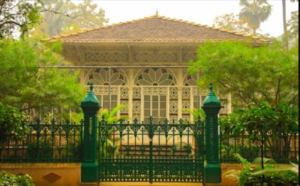
In 1901, Tagore relocated to the Santiniketan ashram, where he initiated an experimental school inspired by the traditional guru-shishya teaching approach found in the Upanishads. His vision was to revitalize ancient teaching methods, believing they would offer greater benefits compared to the modern educational system imposed by the British.
During this period, Tagore suffered the loss of his wife and two of their children, which left him deeply distressed.
Upon returning from England and during his residency in Santiniketan, Tagore penned numerous literary masterpieces encompassing poetry, stories, and novels. His creations began to garner significant acclaim both within India and internationally.
In 1909, Rabindranath Tagore commenced the writing of Gitanjali. By 1912, Tagore embarked on his second journey to Europe. During his voyage to London, he translated select poems/songs from Gitanjali into English. In London, he encountered William Rothenstein, a prominent British painter, who was deeply moved by the poems. Rothenstein made copies of Tagore’s work and distributed them to Yeats and other English poets. Yeats, captivated by Tagore’s verses, later penned the introduction to Gitanjali. Subsequently, in September 1912, the collection was published in a limited edition by the India Society in London. Tagore’s literary achievement culminated in 1913 when Gitanjali clinched the Nobel Prize in Literature, making him the first non-European to be bestowed with this esteemed accolade.
In 1915, Rabindranath Tagore received a knighthood from King George V.
Rabindranath Tagore: Educationalist
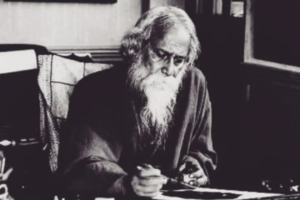
In 1921, Rabindranath Tagore founded Visva-Bharati University and dedicated all the funds he received from the Nobel Prize and royalties from his literary works to support the institution.
Tagore possessed a profound understanding of Western culture, particularly in areas such as Western poetry and sciences. He demonstrated a keen grasp of modern physics, post-Newtonian theories, and engaged in a notable discussion with Einstein in 1930 regarding the emerging principles of quantum mechanics and chaos. His interactions and recorded conversations with luminaries like Albert Einstein and H.G. Wells underscore his intellectual brilliance.
In 1940, Oxford University organized a special ceremony at Santiniketan, conferring upon Rabindranath Tagore an honorary Doctorate of Literature.
Rabindranath Tagore: Legacy
Rabindranath Tagore revolutionized the perception of Bengali literature, leaving an indelible mark on its readers.
Statues of Rabindranath Tagore adorn many countries, and numerous annual events are held worldwide to honor the legacy of this legendary writer.
Numerous renowned international writers have contributed to the global dissemination of Rabindranath Tagore’s works through translations, making his literary contributions accessible to a wide audience.
Five museums pay homage to Tagore’s legacy, with three located in India and two in Bangladesh. These museums showcase his renowned works, attracting millions of visitors annually.
Death of Rabindranath Tagore
After enduring a prolonged period of illness, Tagore passed away on August 7, 1941, in the very mansion where he spent his formative years.
